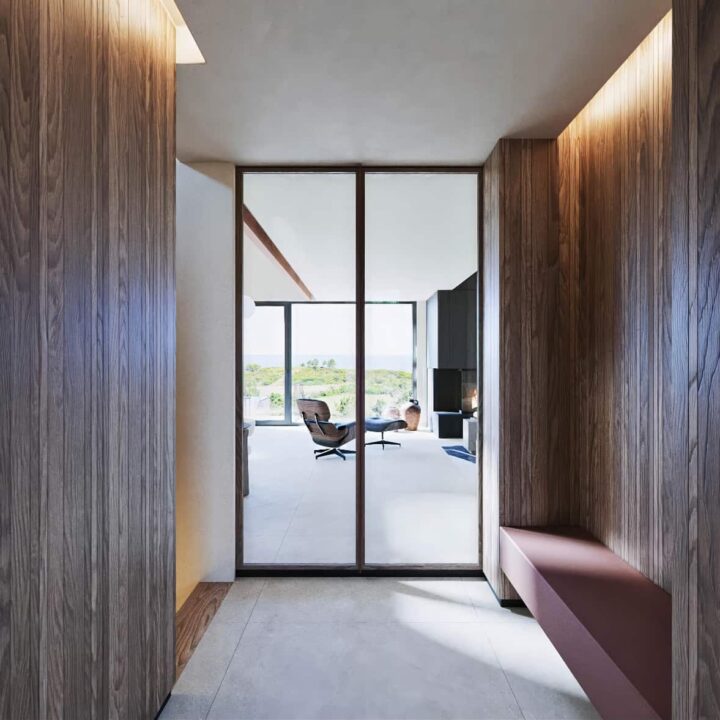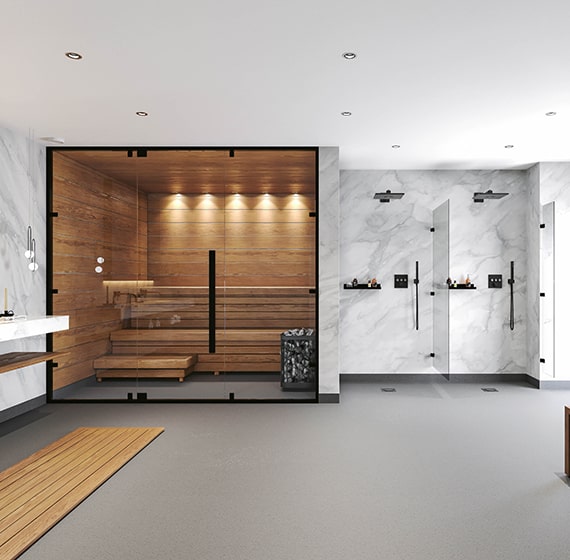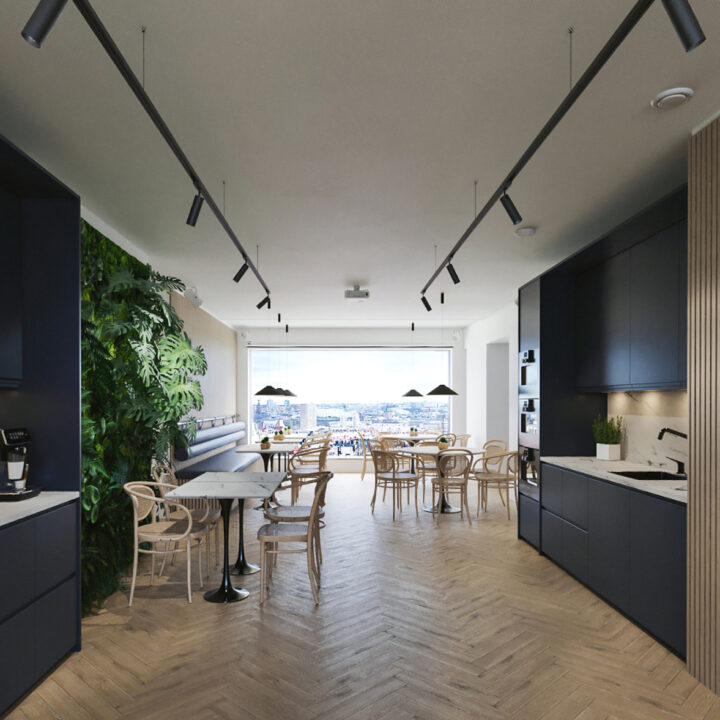3D-Visualisering
3d Visualisering Sverige
Är du i behov av högkvalitativa 3D-Visualisering tjänster för ditt nästa projekt? Leta inte längre än Creative Visual Studio. Vårt team av erfarna 3D-konstnärer och arkitekter är baserade i Stockholm, Sverige och de använder den senaste tekniken för att förverkliga dina idéer med enastående noggrannhet och realism. Våra 3D-Visualisering tjänster inkluderar arkitektoniska visualiseringar, produktvisualiseringar, inredningsvisualiseringar och virtuell verklighetsupplevelser. Oavsett om du är arkitekt, designer, utvecklare eller marknadsförare kan vårt team hjälpa dig att kommunicera din vision på ett sätt som är både engagerande och övertygande.
Föreställ dig att kunna kliva in i ditt projekt innan det ens bryter mark – det är kraften i 3d visualisering sverige som du fått av Creative Visual Studio. Inbäddat i hjärtat av Stockholm, Sverige, använder vårt team av skickliga 3D-konstnärer och arkitekter den senaste tekniken för att omvandla dina koncept till uppslukande, hyperrealistiska upplevelser. Från storheten hos arkitektoniska mästerverk till de minsta detaljerna i produktdesign, vi är här för att göra dina visioner påtagliga.
Oavsett om du är en arkitekt som siktar på att visa upp din senaste skapelse, en designer som tänker på inredningsestetik, en utvecklare som vill locka potentiella köpare eller en marknadsförare som vill fängsla publiken, är våra 3D-visualiseringstjänster dina kreativa allierade. Vi förstår att bilder talar högre än ord – de ger resonans, engagerar och övertygar. Vårt engagemang ligger inte bara i att återge bilder, utan i att skapa berättelser som resonerar med känslor och ambitioner. Låt oss måla din fantasis duk med pixlar som blåser liv i dina drömmar. Ditt projekt förtjänar inget annat än det bästa – och det är precis vad vi är här för att leverera.
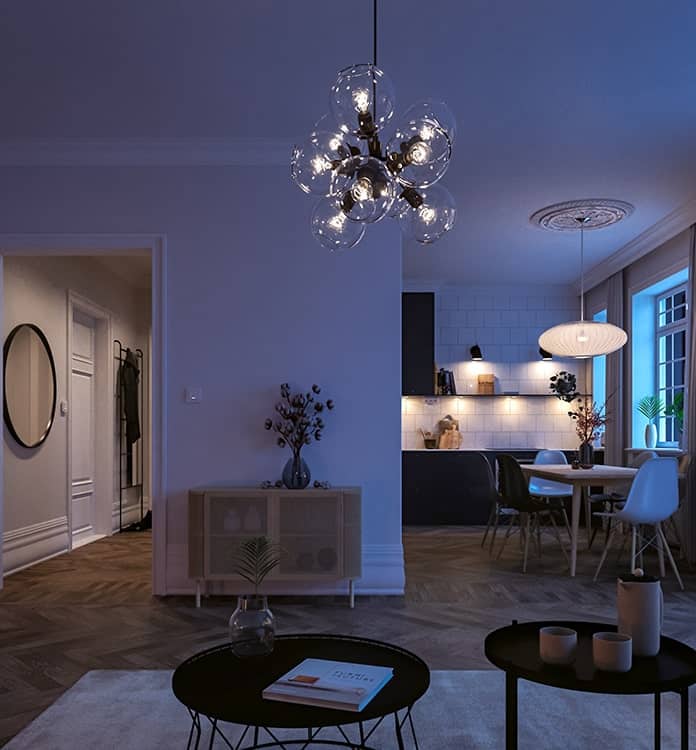
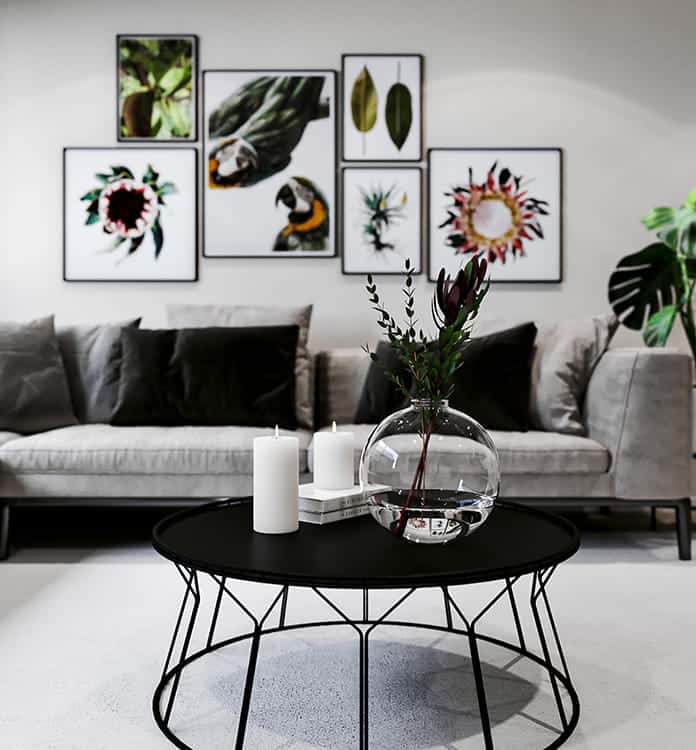
Varför välja Creative Visual Studio för 3d Visualisering Sverige?
Vision realiserad med precision: På Creative Visual Studio skapar vi inte bara 3D-visualiseringar; vi tillverkar noggrant digitala repliker som speglar din fantasi. Våra skickliga 3D-konstnärer använder den senaste tekniken för att fånga varje detalj, vilket säkerställer att dina idéer förverkligas med oöverträffad noggrannhet.
Arkitektonisk briljans: Med ett team som är rotat i både arkitektonisk expertis och konstnärlig stil förstår vi inte bara strukturer – vi lyfter dem till hisnande visuella upplevelser. Från höga skyskrapor till mysiga hem, våra arkitektoniska visualiseringar väver samman form, funktion och känsla.
Interiörcharm avslöjad: Invändiga utrymmen har historier att berätta, och vi är här för att låta dem tala. Våra inredningsvisualiseringar visar inte bara upp estetik utan omsluter dig också i atmosfären, färgerna och texturerna som gör att utrymmen känns som hemma.
Produkt tänkt till perfektion: Oavsett om det är en banbrytande gadget eller ett möbelmästerverk ger våra produktvisualiseringar liv åt dina mönster. Vi fångar essensen, funktionaliteten och lockelsen hos dina produkter, vilket gör dem oemotståndliga för din målgrupp.
Virtual Reality Immersion: Gå bortom skärmen med våra virtuella verklighetsupplevelser. Fördjupa dig i en digital värld där du kan gå genom utrymmen, interagera med produkter och känna att du är fysiskt närvarande – ett övertygande verktyg för att förmedla din vision.
Conclusions
Beläget i Stockholm, Sverige, använder vårt skickliga team av 3D-konstnärer och arkitekter skickligt den senaste tekniken för att omvandla koncept till häpnadsväckande realistiska digitala renderingar. Allt från arkitektoniska underverk till invecklade produktdesigner, våra visualiseringar fångar på ett skickligt sätt varje intrikata detalj med osviklig precision. Detta gör att du kan gå igenom och fördjupa dig i dina idéer, långt innan de förverkligas. Oavsett om du är en arkitekt, designer, utvecklare eller marknadsförare, utvecklar vårt utbud av tjänster potentialen hos visuella effekter för att artikulera känslor, tända kopplingar och omvandla visioner till påtagliga digitala landskap. Välj Creative Visual Studio, där uppfinningsrikedom sömlöst konvergerar med teknik för att skapa uppslukande digitala upplevelser som harmoniserar med dina ambitioner.
Vi förstår att varje projekt är unikt, och det är därför vi arbetar nära våra kunder för att förstå deras behov och preferenser. Våra 3D-artister tar sig tid att utforska olika alternativ och möjligheter innan de fattar några beslut, för att säkerställa att den slutliga produkten överträffar dina förväntningar.
Våra 3D-Visualisering tjänster är inte bara begränsade till statiska bilder, vi erbjuder även interaktiva 3D-modeller, virtuell verklighet och förstärkta verklighetslösningar som kan ge ditt projekt liv på ett sätt som traditionella metoder helt enkelt inte kan matcha. Oavsett om du vill visa upp en ny utveckling, skapa ett virtuellt showroom eller skapa en uppslukande marknadsföringsupplevelse, har vi kompetensen och erfarenheten för att få det att hända.
På Creative Visual Studio är vi stolta över vår uppmärksamhet på detaljer och engagemang för kvalitet. Vi brinner för att skapa fantastiska, högkvalitativa 3D-Visualisering som hjälper våra kunder att sticka ut på en trång marknad. Med vår hjälp kan du ta ditt projekt till nästa nivå och nå dina mål. Kontakta oss idag för att lära dig mer om hur vi kan hjälpa dig att förverkliga din vision.
What is 3D Visualisering ?
3D Visualisering is a simulated 3D environment that enables users to explore and interact with a virtual surrounding in a way that approximates reality, as it is perceived through the users’ senses. The environment is created with computer hardware and software, although users might also need to wear devices such as helmets or goggles to interact with the environment.
The more deeply users can immerse themselves in a VR environment — and block out their physical surroundings — the more they are able to suspend their belief and accept it as real, even if it is fantastical in nature.
What are the main types of 3D Visualisering ?
The VR industry still has far to go before realizing its vision of a totally immersive environment that enables users to engage multiple sensations in a way that approximates reality.
However, the technology has come a long way in providing realistic sensory engagement and shows promise for business use in a number of industries.
VR systems can vary significantly from one to the next, depending on their purpose and the technology used, although they generally fall into one of the following three categories:
Non-immersive. This type of VR typically refers to a 3D simulated environment that’s accessed through a computer screen. The environment might also generate sound, depending on the program. The user has some control over the virtual environment using a keyboard, mouse or other device, but the environment does not directly interact with the user.
A video game is a good example of non-immersive VR, as is a website that enables a user to design a room’s decor.
Semi-immersive. This type of VR offers a partial virtual experience that’s accessed through a computer screen or some type of glasses or headset. It focuses primarily on the visual 3D aspect of 3D Visualisering and does not incorporate physical movement in the way that full immersion does.
A common example of semi-immersive VR is the flight simulator, which is used by airlines and militaries to train their pilots.
Fully immersive. This type of VR delivers the greatest level of 3D Visualisering , completely immersing the user in the simulated 3D world. It incorporates sight, sound and, in some cases, touch. There have even been some experiments with the addition of smell.
Users wear special equipment such as helmets, goggles or gloves and are able to fully interact with the environment.
The environment might also incorporate such equipment as treadmills or stationary bicycles to provide users with the experience of moving through the 3D space.
Fully immersive VR technology is a field still in its infancy, but it has made important inroads into the gaming industry and to some extent the healthcare industry, and it’s generating a great deal of interest in others.
What is 3D Visualisering ?
3D Visualisering is a simulated 3D environment that enables users to explore and interact with a virtual surrounding in a way that approximates reality, as it is perceived through the users’ senses.
The environment is created with computer hardware and software, although users might also need to wear devices such as helmets or goggles to interact with the environment.
The more deeply users can immerse themselves in a VR environment — and block out their physical surroundings — the more they are able to suspend their belief and accept it as real, even if it is fantastical in nature.
What are the main types of 3D Visualisering ?
The VR industry still has far to go before realizing its vision of a totally immersive environment that enables users to engage multiple sensations in a way that approximates reality.
However, the technology has come a long way in providing realistic sensory engagement and shows promise for business use in a number of industries.
VR systems can vary significantly from one to the next, depending on their purpose and the technology used, although they generally fall into one of the following three categories:
Non-immersive. This type of VR typically refers to a 3D simulated environment that’s accessed through a computer screen. The environment might also generate sound, depending on the program. The user has some control over the virtual environment using a keyboard, mouse or other device, but the environment does not directly interact with the user.
A video game is a good example of non-immersive VR, as is a website that enables a user to design a room’s decor.
Semi-immersive. This type of VR offers a partial virtual experience that’s accessed through a computer screen or some type of glasses or headset. It focuses primarily on the visual 3D aspect of 3D Visualisering and does not incorporate physical movement in the way that full immersion does.
A common example of semi-immersive VR is the flight simulator, which is used by airlines and militaries to train their pilots.
Fully immersive. This type of VR delivers the greatest level of 3D Visualisering , completely immersing the user in the simulated 3D world. It incorporates sight, sound and, in some cases, touch. There have even been some experiments with the addition of smell.
Users wear special equipment such as helmets, goggles or gloves and are able to fully interact with the environment.
The environment might also incorporate such equipment as treadmills or stationary bicycles to provide users with the experience of moving through the 3D space.
Fully immersive VR technology is a field still in its infancy, but it has made important inroads into the gaming industry and to some extent the healthcare industry, and it’s generating a great deal of interest in others.
What is 3D Visualisering ?
3D Visualisering is a simulated 3D environment that enables users to explore and interact with a virtual surrounding in a way that approximates reality, as it is perceived through the users’ senses.
The environment is created with computer hardware and software, although users might also need to wear devices such as helmets or goggles to interact with the environment.
The more deeply users can immerse themselves in a VR environment — and block out their physical surroundings — the more they are able to suspend their belief and accept it as real, even if it is fantastical in nature.
What are the main types of 3D Visualisering ?
The VR industry still has far to go before realizing its vision of a totally immersive environment that enables users to engage multiple sensations in a way that approximates reality. However, the technology has come a long way in providing realistic sensory engagement and shows promise for business use in a number of industries.
VR systems can vary significantly from one to the next, depending on their purpose and the technology used, although they generally fall into one of the following three categories:
Non-immersive. This type of VR typically refers to a 3D simulated environment that’s accessed through a computer screen. The environment might also generate sound, depending on the program.
The user has some control over the virtual environment using a keyboard, mouse or other device, but the environment does not directly interact with the user.
A video game is a good example of non-immersive VR, as is a website that enables a user to design a room’s decor.
Semi-immersive. This type of VR offers a partial virtual experience that’s accessed through a computer screen or some type of glasses or headset. It focuses primarily on the visual 3D aspect of 3D Visualisering and does not incorporate physical movement in the way that full immersion does.
A common example of semi-immersive VR is the flight simulator, which is used by airlines and militaries to train their pilots.
Fully immersive. This type of VR delivers the greatest level of 3D Visualisering , completely immersing the user in the simulated 3D world. It incorporates sight, sound and, in some cases, touch.
There have even been some experiments with the addition of smell. Users wear special equipment such as helmets, goggles or gloves and are able to fully interact with the environment.
The environment might also incorporate such equipment as treadmills or stationary bicycles to provide users with the experience of moving through the 3D space.
Fully immersive VR technology is a field still in its infancy, but it has made important inroads into the gaming industry and to some extent the healthcare industry, and it’s generating a great deal of interest in others.
What is 3D Visualisering ?
3D Visualisering is a simulated 3D environment that enables users to explore and interact with a virtual surrounding in a way that approximates reality, as it is perceived through the users’ senses.
The environment is created with computer hardware and software, although users might also need to wear devices such as helmets or goggles to interact with the environment.
The more deeply users can immerse themselves in a VR environment — and block out their physical surroundings — the more they are able to suspend their belief and accept it as real, even if it is fantastical in nature.
What are the main types of 3D Visualisering ?
The VR industry still has far to go before realizing its vision of a totally immersive environment that enables users to engage multiple sensations in a way that approximates reality.
However, the technology has come a long way in providing realistic sensory engagement and shows promise for business use in a number of industries.
VR systems can vary significantly from one to the next, depending on their purpose and the technology used, although they generally fall into one of the following three categories:
Non-immersive. This type of VR typically refers to a 3D simulated environment that’s accessed through a computer screen. The environment might also generate sound, depending on the program.
The user has some control over the virtual environment using a keyboard, mouse or other device, but the environment does not directly interact with the user.
A video game is a good example of non-immersive VR, as is a website that enables a user to design a room’s decor.
Semi-immersive. This type of VR offers a partial virtual experience that’s accessed through a computer screen or some type of glasses or headset.
It focuses primarily on the visual 3D aspect of 3D Visualisering and does not incorporate physical movement in the way that full immersion does. A common example of semi-immersive VR is the flight simulator, which is used by airlines and militaries to train their pilots.
Fully immersive. This type of VR delivers the greatest level of 3D Visualisering , completely immersing the user in the simulated 3D world. It incorporates sight, sound and, in some cases, touch . Current Times World Information Centre
There have even been some experiments with the addition of smell. Users wear special equipment such as helmets, goggles or gloves and are able to fully interact with the environment.
The environment might also incorporate such equipment as treadmills or stationary bicycles to provide users with the experience of moving through the 3D space.
Fully immersive VR technology is a field still in its infancy, but it has made important inroads into the gaming industry and to some extent the healthcare industry, and it’s generating a great deal of interest in others Health today.
What are the main types of 3D Visualisering ?
The VR industry still has far to go before realizing its vision of a totally immersive environment that enables users to engage multiple sensations in a way that approximates reality.
However, the technology has come a long way in providing realistic sensory engagement and shows promise for business use in a number of industries.
VR systems can vary significantly from one to the next, depending on their purpose and the technology used, although they generally fall into one of the following three categories:
Non-immersive. This type of VR typically refers to a 3D simulated environment that’s accessed through a computer screen. The environment might also generate sound, depending on the program. The user has some control over the virtual environment using a keyboard, mouse or other device, but the environment does not directly interact with the user.
A video game is a good example of non-immersive VR, as is a website that enables a user to design a room’s decor.
Semi-immersive. This type of VR offers a partial virtual experience that’s accessed through a computer screen or some type of glasses or headset. It focuses primarily on the visual 3D aspect of 3D Visualisering and does not incorporate physical movement in the way that full immersion does.
A common example of semi-immersive VR is the flight simulator, which is used by airlines and militaries to train their pilots.
Fully immersive. This type of VR delivers the greatest level of 3D Visualisering , completely immersing the user in the simulated 3D world. It incorporates sight, sound and, in some cases, touch. There have even been some experiments with the addition of smell. Users wear special equipment such as helmets, goggles or gloves and are able to fully interact with the environment.
The environment might also incorporate such equipment as treadmills or stationary bicycles to provide users with the experience of moving through the 3D space.
Fully immersive VR technology is a field still in its infancy, but it has made important inroads into the gaming industry and to some extent the healthcare industry, and it’s generating a great deal of interest in others.
What is 3D Visualisering ?
3D Visualisering is a simulated 3D environment that enables users to explore and interact with a virtual surrounding in a way that approximates reality, as it is perceived through the users’ senses.
The environment is created with computer hardware and software, although users might also need to wear devices such as helmets or goggles to interact with the environment.
The more deeply users can immerse themselves in a VR environment — and block out their physical surroundings — the more they are able to suspend their belief and accept it as real, even if it is fantastical in nature.
What are the main types of 3D Visualisering ?
The VR industry still has far to go before realizing its vision of a totally immersive environment that enables users to engage multiple sensations in a way that approximates reality.
However, the technology has come a long way in providing realistic sensory engagement and shows promise for business use in a number of industries. Sophia education
VR systems can vary significantly from one to the next, depending on their purpose and the technology used, although they generally fall into one of the following three categories:
Non-immersive. This type of VR typically refers to a 3D simulated environment that’s accessed through a computer screen. The environment might also generate sound, depending on the program. The user has some control over the virtual environment using a keyboard, mouse or other device, but the environment does not directly interact with the user.
A video game is a good example of non-immersive VR, as is a website that enables a user to design a room’s decor End Roar.
Semi-immersive. This type of VR offers a partial virtual experience that’s accessed through a computer screen or some type of glasses or headset.
It focuses primarily on the visual 3D aspect of 3D Visualisering and does not incorporate physical movement in the way that full immersion does. A common example of semi-immersive VR is the flight simulator, which is used by airlines and militaries to train their pilots.
Fully immersive. This type of VR delivers the greatest level of 3D Visualisering , completely immersing the user in the simulated 3D world. It incorporates sight, sound and, in some cases, touch.
There have even been some experiments with the addition of smell. Users wear special equipment such as helmets, goggles or gloves and are able to fully interact with the environment.
The environment might also incorporate such equipment as treadmills or stationary bicycles to provide users with the experience of moving through the 3D space. Fully immersive VR technology is a field still in its infancy, but it has made important inroads into the gaming industry and to some extent the healthcare industry, and it’s generating a great deal of interest in others.


